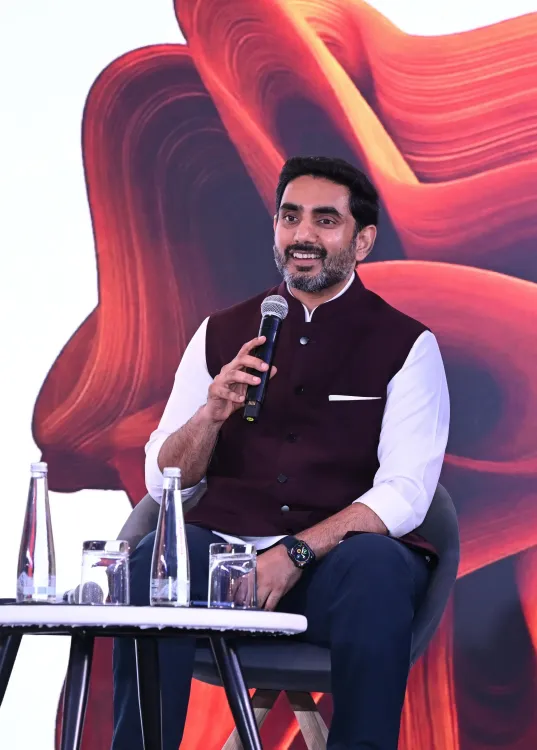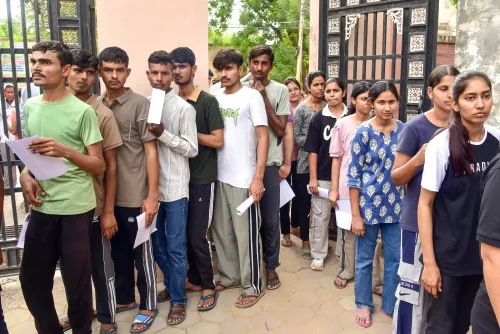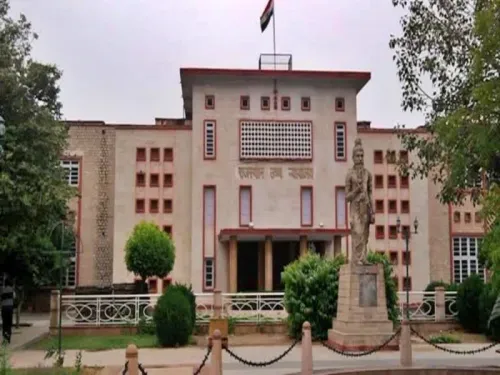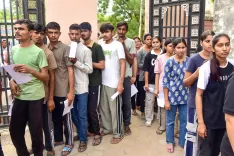Will Google Revolutionize Visakhapatnam's Landscape Like Microsoft Did in Hyderabad?

Synopsis
Key Takeaways
- Google's investment is set to transform Visakhapatnam's economy.
- 1.88 lakh jobs will be created with the new data center.
- Andhra Pradesh ranks first in speed of doing business.
- The state aims for a $2.4 trillion economy by 2047.
- Focus on execution rather than just announcements.
Amaravati, Oct 15 (NationPress) Google’s largest data center is set to transform the landscape of Visakhapatnam similarly to how Microsoft reshaped Hyderabad, according to Andhra Pradesh IT Minister Nara Lokesh. He highlighted that Google will invest a staggering $15 billion over the next five years, marking it as the largest FDI in India. This investment is expected to create 1.88 lakh jobs and generate a remarkable Rs. 48,000 crore impact on the local economy, with a multiplier effect of 25 times.
During a press conference, Lokesh detailed the state’s initiatives to attract Google’s investment, noting that after reviewing options in various countries and Indian states, Google selected Andhra Pradesh for its efficient business environment.
Lokesh recounted his initial meeting with the Google team in September 2024 in Visakhapatnam, where he presented the site for the data center. This was followed by discussions with Google Cloud leaders during his trip to the United States. In November, Chief Minister N. Chandrababu Naidu also met with the Google delegation.
He mentioned that Google sought amendments to certain laws at both state and central levels and required clarity on various matters. The Chief Minister discussed these requests with Union IT Minister Ashwini Vaishnaw, Finance Minister Nirmala Sitharaman, and Prime Minister Narendra Modi.
Lokesh emphasized that Visakhapatnam is poised to attract not just data centers but also cable landing stations, renewable energy, and AI companies.
He asserted that Andhra Pradesh is drawing substantial investments due to its speed in business operations, where the state ranks first.
The government aims to develop Andhra Pradesh into a $2.4 trillion economy by 2047 with a cluster-based approach and both vertical and horizontal integration. The Greater Visakhapatnam Economic Corridor alone is expected to become a $1 trillion economy, complemented by two additional corridors in Amaravati and Rayalaseema.
He remarked that the government prioritizes implementation over mere announcements and MoUs. Despite no MoU with Arcelor Mittal, the foundation for India’s largest steel plant will be laid in Visakhapatnam this November.
Lokesh also announced that TCS will open its first office in Visakhapatnam in November and begin construction on a large campus. He expressed hope that Cognizant would also lay the foundation for its campus in Visakhapatnam this month, with the office opening in December.
He disclosed that he is personally overseeing the progress of each project, establishing WhatsApp groups with ministers, top officials, and company representatives for major projects.
The minister reiterated the government’s commitment to fulfilling its Super Six promise of creating 20 lakh jobs in five years, with five lakh of these in the IT sector alone.
Lokesh compared Andhra Pradesh’s governance to a double-engine bullet train, highlighting collaboration between Prime Minister Modi and Chief Minister Naidu.
He noted the development of Anantapur as a mobility valley with the KIA plant, and that northern Anantapur and Kurnool are attracting major renewable energy projects, alongside an electronics manufacturing ecosystem in Chittoor and Kadapa districts. Nellore already hosts a significant ecosystem in the form of Sri City.
He shared plans to create a Space City, with Skyroot Aerospace receiving 300 acres for a private satellite launch facility. Additionally, Quantum Valley is under development in Amaravati.
Lokesh stated that Andhra Pradesh currently manufactures 50 percent of the country’s air conditioners and anticipates that new investments from Daikin, Bluestar, and LG will increase this share to 80 percent.









